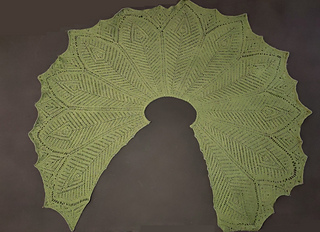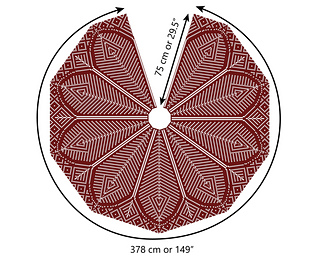patterns >  Yarnandy shop and 3 more...
Yarnandy shop and 3 more...
> Ruby phoenix capelet









Ruby phoenix capelet
Also available on Etsy.
About the pattern
Envelop yourself in a richly detailed Tunisian crochet lace capelet with intricate feathery details. This long and flowy capelet covers your shoulders and arms, with full body coverage in the front and back.
The shaping in each feather creates a gentle wave on the edge of the capelet, making it fall in elegant folds, resembling large, flowy sleeves on the side of the body.
The capelet is made up of a variable number of identical wedges that you can repeat more or fewer times for more or less coverage.
You will get two PDF files:
- one with full instructions and charts large (A3) pages;
- one easy read or mobile friendly version, with large text (full instructions) and no charts.
Skill level
Advanced, due to working with various stitches (simple, full, knit, purl stitches, eyelets, decreases) and unique pattern repeats in each row.
Materials
- Yarn: about 1050-1200 meters or 280-300 grams of yarn of your preference in fine or size 1 weight at 550 meters per 100 grams;
- Hook - 5 mm Tunisian crochet hook with 100-150 (40”-60”) cable or hook that gets you gauge; 3.5 mm regular hook;
- Tapestry needle, scissors, tape measure, stitch markers; Optional: tools for blocking (iron with steam or other steamer), blocking mats and pins.
Sample made in 3 balls of Papatya Angora yarn (550 m per 100 g ball), 80% acrylic, 20% wool, colorway 3250.
Easy read or Low Vision
The easy read or Low Vision files respect the following requirements:
24 point Arial font; 26-30 point and bold for headings.
Black text, white background.
Left justified, 1 inch margins.
No columns.
Page numbers bottom left.
No charts required to make the pattern.
All abbreviations explained in the list.
43 projects
stashed
58 times
- First published: October 2024
- Page created: October 2, 2024
- Last updated: December 13, 2025 …
- visits in the last 24 hours
- visitors right now





